What To Do When An Alzheimer Patient Gets Violent
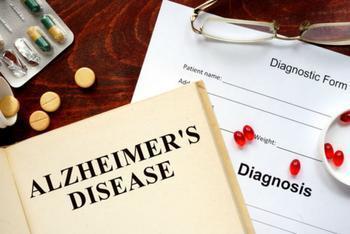
Exercise could help protect against Alzheimer's
Researchers suggest that staying agile can aid improve retention
Millions of people across the country are currently suffering from Alzheimer's affliction, and experts take yet to detect a cure. However, researchers continue to acquit experiments in an attempt to help patients live as comfortably as possible.
Recently, researchers from Columbia University Irving Medical Centre found that practise could help reduce the risk of developing Alzheimer's. Exercising releases the hormone irisin, which has been linked to neuron growth in the part ...
Continue reading
Recent Manufactures
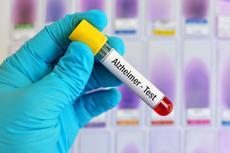
Blood test to help diagnose Alzheimer'due south in testing stages
Researchers are confident in the early results
Testing for Alzheimer's disease tin can be a long, costly, and tiresome process for patients, but researchers from Brigham and Women'south Infirmary accept been working to make the testing procedure easier on patients.
The group has developed a blood examination that would evaluate the level of tau -- the leading protein in the encephalon associated with Alzheimer'due south -- before a patient is even showing signs or symptoms of the disease.
"A blood examination for Alzheimer'due south disease could exist administered hands and repeatedly, with patients going to their main intendance office rather than having to get into a infirmary," said Dr. Dominic Walsh. "Ultimately, a blood-based test could supercede cerebrospinal fluid testing and/or brain imaging. Our new examination has the potential to exercise just that."
Though the test is currently in the testing stages, Dr. Walsh is calling it a "transformative breakthrough" based on the early results.
How information technology works
Tau is a protein in the brain that is nigh typically associated with Alzheimer's. Though tau tin develop through a number of different related molecules, the researchers were able to create a model that differentiates between the individual types of tau to ensure that the blood test comes upwards with the most accurate result.
The researchers have conducted two trials so far with participants from Harvard's Crumbling Brain Written report and the Found of Neurology in London. The offset group consisted of 65 participants and the 2nd group had 86.
Everyone involved in the study donated samples of plasma and cerebrospinal fluid, which helped the researchers wait at the breakdown of the tau protein and see exactly what was linked to Alzheimer's.
In both tests, the researchers institute one strand of tau -- NT1 -- that was effective in predicting and identifying cases of Alzheimer's.
The next step for the researchers is to open the test up to larger groups of participants to further test its effectiveness on a wider sample. Nevertheless, these early on results proved to Dr. Walsh and his team that they could be on the correct track.
"Nosotros've made our information and the tools needed to perform our test widely bachelor because we want other enquiry groups to put this to the test," he said. "Information technology'southward important for others to validate our findings so that we can be certain this test will work beyond different populations."
Fighting Alzheimer's
While this blood test could potentially change the way doctors go about diagnosing Alzheimer's, swain researchers accept made strides this year in an effort to better diagnose and treat the disease.
In late September, researchers from the Clinical Memory Research Unit of measurement at Lund University in Sweden developed a new encephalon imaging technique that would help doctors make the well-nigh accurate Alzheimer's diagnoses.
The researchers used a PET scan to evaluate the level of tau in the encephalon past administering a marking for the poly peptide before the test. The researchers found this new test to be more than successful than traditional Alzheimer's screening methods.
"If the patient has tau in sure parts of the brain, the marker will detect it," said researcher Oskar Hansson. "The result -- whether Alzheimer tau is nowadays or non -- is very clearly visible on the PET images."
On the treatment front, researchers institute success with a clinical trial for a drug being developed to care for Alzheimer's.
Amyloid is another protein often found in the brain with Alzheimer's, and researchers from Biogen and Eisai worked to develop BAN2401 -- an anti-amyloid drug. Though unsuccessful in initial tests, this new and improved version of the drug was institute to slow the progression of Alzheimer's in the study's clinical trial.
Testing for Alzheimer's disease tin can be a long, costly, and irksome process for patients, but researchers from Brigham and Women'south Hospital have been worki...
Read less Read more
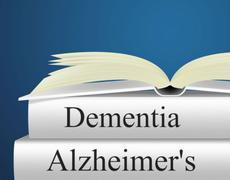
Regular practise reduces fall-related injuries for those with dementia and Alzheimer'south
Researchers say staying active could be central to promoting meliorate health
The symptoms and risks associated with Alzheimer's disease (AD) and dementia accept been well-documented, and with over v.5 million adults across the United States currently suffering, the medical community continues to look for ways to convalesce discomfort and make advancements.
A new study was recently published in the journal American Elderliness Society that explores the effect do has on reducing the risk of falls among Alzheimer's and dementia patients. The researchers note that over 60 pct of people with AD/dementia fall every year, and they are twice as likely to fall compared with people who don't take Ad/dementia.
More movement
The researchers' primary goal was to see if Advertising/dementia patients with neuropsychiatric symptoms -- such as depression, anxiety, irritability, apathy, aggression, hallucinations, etc. -- had a reduced risk of falling when do was a regular part of their routines.
The researchers tested this by evaluating the FINALEX trial -- a study that includes a wide demographic of people with Advertizement/dementia and neuropsychiatric symptoms. The study compared participants who had customs care -- which didn't include practise -- with those who participated in group or home do.
The ii groups were monitored by physiotherapists for 1 year and engaged in physical activity for 1 60 minutes two times per calendar week. The participants were evaluated based on endurance, strength, multitask grooming, and balance.
Ane of the biggest takeaways from the written report was that the participants who had severe neuropsychiatric symptoms -- such as depression or anxiety -- were at a greater risk for falls, though the practice proved to be a benign method. Additionally, those who had less severe symptoms -- simply also didn't exercise -- still had a loftier risk of falling.
Those in the exercise groups were plant to be at less of a risk for falls, while the opposite was truthful for those who weren't in the exercise groups.
The researchers believe that incorporating exercise into a routine of AD/dementia patients volition likely reduce the risk of falls, though more enquiry will need to be done in this area to confirm the results.
Consistent findings
The findings from this report evidence to be consequent with a report from earlier this yr which institute that exercise was linked to improved brain function and can even help forbid memory loss, cognitive function, and diseases like Alzheimer'southward and dementia.
Conducted past researchers from UT Southwestern, the study plant that keeping agile caused nerve fibers in the brain to deteriorate at a much slower rate than for those who didn't practice as oftentimes.
"Evidence suggests that what is bad for your eye is bad for your brain," said Dr. Rong Zhang of UT Southwestern. "Nosotros demand studies like this to find out how the two are intertwined and hopefully find the right formula to assist prevent Alzheimer's affliction."
The symptoms and risks associated with Alzheimer's affliction (Ad) and dementia have been well-documented, and with over v.five million adults across the United...
Read less Read more than

New study suggests a strong connection between herpes and Alzheimer'south
One researcher says herpes could business relationship for 'l percent or more' of Alzheimer'due south cases
While researchers continue to look for the cause of Alzheimer's affliction, a new study published in Frontiers in Aging Neuroscience explores the connection betwixt the development of the condition and the herpes virus.
Researcher Ruth Itzhaki has spent over two decades studying the relationship between herpes and Alzheimer'southward, and in this most recent study she studied the effects that herpes flare ups accept on neurons in the brain.
Exploring the connection
Canker never goes away entirely, with the condition ofttimes flaring upwards during times of stress or illness. The nearly severe form of herpes is Canker Simplex Virus 1 (HSV1), and co-ordinate to Itzhaki, this strand of the infection could account for "fifty percent or more of Alzheimer's disease cases."
A key component of Itzhaki's theory was testing an antiviral drug that could alleviate the gamble of senile dementia in people that had herpes.
To get an accurate population sampling to test this theory, Itzhaki utilized information taken from Taiwan'due south National Wellness Insurance Research Database, which documents information on illness and infections.
Every bit nearly all of Taiwan's population is enrolled in the Database, Itzhaki was able to evaluate three studies published between 2017 and 2018 that described the ways patients with HSV1 were treated by healthcare professionals; the data showed the evolution of those with senile dementia.
Itzhaki found that the antiviral drug was an effective course of handling for those who were infected with HSV1 and so developed dementia. She also found that those who already have HSV1 areat a much greater risk of later developing senile dementia.
Itzhaki noted that this study focuses on those with the almost severe cases of the infection, and future research would have to focus on dementia rates in those with more mild forms of herpes.
Despite this, Itzhaki was confident in the report'due south results.
"Considering that over 150 publications strongly support an HSV1 part in Alzheimer'due south, these Taiwan findings greatly justify usage of anti-herpes antivirals -- which are safe and well tolerated -- to treat Alzheimer's disease," said Itzhaki. "They also incentivize development of an HSV1 vaccine, which would likely be the most effective handling."
Contempo Alzheimer'due south breakthroughs
Alzheimer's research continues to be a point of emphasis for the medical community, and researchers have made considerable contributions to the field in recent months.
Back in July, a major drug company reported positive results from a clinical trial for a new Alzheimer'southward drug. The written report involved nearly 900 participants in the early on stages of Alzheimer's, and later 18 months, the drug was found to exist successful in slowing the progress of the illness.
Afterwards in the summer, researchers at the University of Adelaide plant a link between atomic number 26 in our cells and a rare genetic mutation that causes Alzheimer's.
About recently, researchers from the Clinical Memory Research Unit at Lund Academy found a new brain imaging technique that would aid doctors diagnose Alzheimer's more accurately. The PET scan involved in the study proved to exist more successful than traditional treatments that are currently used to diagnose Alzheimer's, and the researchers are confident the method will gain popularity worldwide.
While researchers proceed to look for the cause of Alzheimer'southward disease, a new study published in Frontiers in Aging Neuroscience explores the connection b...
Read less Read more

New brain imaging technique may help doctors more than accurately diagnose Alzheimer'south
Researchers are optimistic about the hereafter of the technique
Researchers from the Clinical Memory Enquiry Unit at Lund University in Sweden recently published an article detailing a new brain imaging technique that would help doctors diagnose Alzheimer'due south more accurately.
In the study, the researchers focused on the spread of two Alzheimer's-linked proteins throughout the encephalon -- beta-amyloid and tau. While beta-amyloid tin can starting time spreading years before the patient starts showing symptoms of Alzheimer'southward, the presence of tau on a brain scan is an indicator that the affliction is much farther along.
"It is when tau begins to spread that the neurons get-go dying and the patient experiences the outset problems with the disease," senior researcher Rik Ossenkoppele said in a printing release. "If we scan a patient with retentivity difficulties and he or she proves to have a lot of tau in the brain, we know with a high degree of certainty that information technology is a example of Alzheimer'southward."
The study shows meaning hope for the hereafter of Alzheimer'south research. With the right diagnosis, patients can exist put on the right track regarding a medication and diet regimen -- 2 things that have been linked to improved cerebral function for those living with Alzheimer's.
The report
The researchers conducted an international report with over 700 participants, and found their method to exist successful in correctly diagnosing Alzheimer's in 90-95 percent of all cases.
"The method works very well," researcher Oskar Hansson said in the press release. "I believe it will be applied clinically all over the globe in only a few years."
Using a PET scan to make up one's mind the level of tau in each patient, the researchers were able to get the most clear and precise image. Co-ordinate to Hansson, the patients received an IV of the tau marker and the PET scan did the balance.
"If the patient has tau in certain parts of the brain, the marker volition observe it," Hansson said. "The upshot -- whether Alzheimer tau is present or not -- is very clearly visible on the PET images."
The new test proved to exist more than successful than traditional treatments that are currently used to diagnose Alzheimer's. Because of the overlap betwixt Alzheimer's symptoms and those of other conditions, getting an accurate diagnosis can be difficult. The researchers' tau examination showed its effectiveness -- beating out the often used beta-amyloid-PET browse and MRI scans.
The full written report has been published in Periodical of the American Medical Clan (JAMA).
Researchers from the Clinical Memory Research Unit at Lund University in Sweden recently published an article detailing a new brain imaging technique that...
Read less Read more than
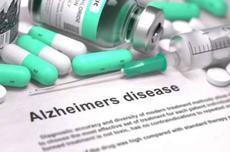
Alzheimer's drug yields positive results
The same drug disappointed during clinical trials in December
After a series of disappointments, a major drug visitor has reported promising clinical trial results from its drug to treat Alzheimer'due south disease.
Massachusetts-based Biogen and its Japanese partner Eisai jointly announced positive topline results from the Phase Two study with BAN2401, an anti-amyloid drug. The buildup of amyloid plaques in the brain is idea to exist a cardinal contributor to Alzheimer'due south.
The study was a large one, involving 856 patients in the early on stages of Alzheimer'due south disease. The study achieved "statistical significance" in its effectiveness at xviii months, slowing the progression of the disease.
Researchers were encouraged because BAN2401 is the same drug that produced disappointing results back in December. The difference, they say, is the drug was just monitored for 12 months. In the second trial, the extra six months produced an comeback.
Mild to moderate side effects
This fourth dimension, the researchers said BAN2401 showed an acceptable tolerability profile through eighteen months of treatment. There were some side effects, but they were characterized as mild to moderate in severity.
All in all, researchers in the field of Alzheimer's disease handling and study expressed new promise at the results.
"The 18-month results of the BAN2401 trial are impressive and provide important support for the amyloid hypothesis," said Jeff Cummings, Yard.D., founding director, Cleveland Clinic Lou Ruvo Eye for Brain Health. "I wait forward to seeing the full information set shared with the broader Alzheimer'southward community as we advance against this devastating disease."
Alzheimer'south is a type of dementia that causes bug with retentivity, thinking, and beliefs. Symptoms usually develop slowly and get worse over time, becoming severe enough to interfere with daily tasks. Eventually, the disease is fatal.
Not a normal role of aging
Aging is a major risk factor, but the Alzheimer's Association points out that the affliction is not a normal part of aging. Currently, an estimated 5.5 million people who are 65 or older take been diagnosed with Alzheimer's disease. About 200,000 people under age 65 have what is chosen younger-onset Alzheimer's.
"The prospect of being able to offering meaningful disease-modifying therapies to individuals suffering from this terrible illness is both heady and humbling," said Dr. Alfred Sandrock, executive vice president and chief medical officer at Biogen. "These BAN2401 18-month data offer important insights in the investigation of potential treatment options for patients with Alzheimer'south affliction and underscores that neurodegenerative diseases may non exist as intractable as they one time seemed."
In an interview with CNBC, Biogen chairman Stelios Papadopoulos called the results an encouraging first step, just he believes further progress is possible. He said a best example approximate for when BAN 2401 could be available to care for patients would be in two to three years.
After a series of disappointments, a major drug company has reported promising clinical trial results from its drug to treat Alzheimer's disease.Massac...
Read less Read more
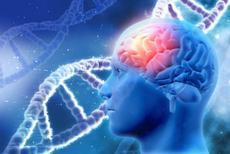

Researchers place brain protein as potential target for Alzheimer's inquiry
They believe that the affliction may occur partly due to the breakdown of an of import encephalon system
Recently, researchers began developing a potential therapy for concussions, using an FDA-approved drug that helps reduce the harmful effects of swelling. Specifically, they found that the expression of a certain membrane protein chosen aquaporin-four increased dramatically after a head injury and acquired damage.
While piece of work on that projection continues, other experts believe that aquaporin-4 may be a prime target for Alzheimer's research. A study conducted by researchers from Oregon Health & Science Academy has revealed a connection betwixt the protein and possible prevention of the brain disease. While it may not materialize into a lasting cure, the researchers believe that their work could contribute to hereafter therapies and prevention strategies.
"It suggests that aquaporin-4 might be a useful target in preventing and treating Alzheimer's disease," said Dr. Jeffrey Iliff, senior author of the study. "However, we aren't nether any illusion that if we could merely fix this one affair, then nosotros'd exist able to cure Alzheimer'south Disease."
Organization breakdown
In a broad sense, Alzheimer's isn't a illness that happens all at once – it takes time and is much more than progressive. There is currently no cure for information technology, merely several therapies take been developed that may exist effective in slowing information technology downwards; the researchers believe that aquaporin-4 could provide another.
Aquaporin-4's functions as part of the brain's glymphatic arrangement. Under certain conditions, it is the poly peptide that allows cognitive-spinal fluid to enter the encephalon and wash abroad other proteins like amyloid and tau – the build upward of which are chief drivers of Alzheimer's.
The researchers believe that when the system regulating aquaporin-4 breaks down, amyloid and tau are immune to build upward unchecked, leading to nerve harm. They tested this theory by analyzing 3 groups of 79 donated brains – people younger than sixty with a history of Alzheimer's, people younger than 60 without a history of any neurological disease, and people over threescore without Alzheimer'southward.
They found that aquaporin-4 levels were well organized and ordered in the brains of people without Alzheimer'southward or a history of neurological illness, but older brains with Alzheimer's had very disorganized aquaporin-4 levels. The researchers posit that Alzheimer's may have developed in these brains due to decreased function to clear away harmful proteins.
Last year, the researchers were given a $1.4 million grant from the Paul G. Allen Family Foundation to continue their inquiry and develop new imaging techniques that could capture encephalon processes as they happened. The squad's full report has been published in JAMA Neurology.
Recently, researchers began developing a potential therapy for concussions, using an FDA-approved drug that helps reduce the harmful effects of swelling. S...
Read less Read more

Tests on promising Alzheimer's drug terminate in thwarting
Ely Lilly volition non seek FDA blessing for solanezumab
There accept been many promising breakthroughs in the field of Alzheimer's disease enquiry, giving hope to millions at risk of the devastating affliction.
The flip side of that, of class, is when these hopeful promises just don't pan out. So information technology was with great disappointment that pharmaceutical giant Eli Lilly appear that its promising new drug solanezumab "did not meet the primary endpoint" in it's final, phase 3 testing. The company said it would not seek Food and Drug Assistants (FDA) blessing of the drug.
Lilly said patients in the trial who were treated with solanezumab did non feel a statistically significant slowing in cognitive decline compared to patients treated with placebo. Information technology dashed the promise raised by previous inquiry.
Solanezumab is a mono-clonal antibody targeting backlog amyloid in the brain. Information technology was designed for patients considered to be at adventure of Alzheimer'southward but who had not displayed symptoms of the affliction.
Slowing retentivity loss by x years
Researchers were hopeful that doctors might somewhen use positron emission tomography (PET scans) to locate beta amyloid as it begins to form plaques in the brains of people with Alzheimer'due south illness 10 to 20 years earlier they show any symptoms of the disease.
The drug would and so be administered, removing the harmful protein from the brain before it could begin to build upward. Researchers were hopeful information technology might tiresome memory loss by at least x years.
"The results of the solanezumab EXPEDITION3 trial were not what we had hoped for and we are disappointed for the millions of people waiting for a potential disease-modifying treatment for Alzheimer's illness," said John C. Lechleiter, Ph.D., chairman, president and CEO of Eli Lilly, in a written statement. "We will evaluate the impact of these results on the development plans for solanezumab and our other Alzheimer's pipeline assets."
Lechleiter also issued a statement to the Alzheimer's community in the video below, vowing his company would proceed pursuing constructive treatments.

Lilly said it would present further findings from the study at the Clinical Trials on Alzheimer's Affliction meeting in early on Dec.
There accept been many promising breakthroughs in the field of Alzheimer's illness research, giving hope to millions at risk of the devastating disease.T...
Read less Read more
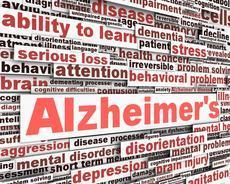
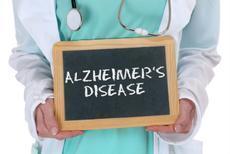
Researchers work towards blood examination to check for Alzheimer'southward disease
Having such a test could help with early detection and prevention efforts
New enquiry conducted at Cardiff University could allow for before detection of Alzheimer's disease, a crucial step towards mitigating the damaging effects that it has on people later in life.
Using nearly 300 participants, researchers used blood tests to distinguish certain biomarkers which could predict whether or not someone would develop the disease in the most future.
"Our research proves that it is possible to predict whether or not an private with balmy memory problems is probable to develop Alzheimer's disease over the next few years," said Paul Morgan, Director of Cardiff University's Systems Immunity Inquiry Establish.
"Nosotros hope to build on this in order to develop a simple claret examination that can predict the likelihood of developing Alzheimer's affliction in older people with mild, and possibly innocent, memory impairment."
Influential findings
In lodge to distinguish the biomarkers, Morgan and his colleagues took blood samples from participants who had mild memory issues and analyzed them for protein content. Later a year, the researchers re-assessed each participant.
They constitute that about a quarter of all participants went on to develop Alzheimer'southward. Interestingly, those who went on to develop the affliction had three proteins in their blood that differed dramatically at the initial screening from those who remained healthy. This evidence could provide some insight into how these immune system proteins contribute to inflammation and Alzheimer'due south as a whole.
Morgan believes that these findings could greatly influence how wellness officials handle Alzheimer'due south where he lives in the United Kingdom.
"Alzheimer'southward affliction affects around 520,000 people in the United kingdom and this number is continually growing every bit the population ages. As such information technology is important that we discover new means to diagnose the affliction early, giving usa a chance to investigate and instigate new treatments before irreversible damage is washed," he said.
The full written report has been published in the Journal of Alzheimer's Illness.
New research conducted at Cardiff University could allow for earlier detection of Alzheimer'due south disease, a crucial footstep towards mitigating the damaging effec...
Read less Read more

A diet to keep your memory sharp
Australian researchers say the Mediterranean diet slows cognitive decline
Well-nigh of employ proceed a diet to lose weight or to improve our concrete condition. But researchers in Australia accept concluded that the Mediterranean diet is non just good for you physically, merely mentally as well.
Writing in the journal Frontiers in Diet, lead author Roy Hardman from Swinburne Academy of Technology in Melbourne and his colleagues say the nutrition appears to boring cognitive pass up.
The Mediterranean nutrition includes a lot of found foods, like leafy greens, fresh fruit and vegetables, cereals, beans, seeds, nuts, and legumes. There is less dairy and red meat, and olive oil is the preferred source of fatty.
"The most surprising result was that the positive effects were found in countries effectually the whole world," Hardman said. "And so regardless of existence located outside of what is considered the Mediterranean region, the positive cognitive furnishings of a higher adherence to a MedDiet were similar in all evaluated papers."
Centre good for you too
For the well-nigh part, doctors recommend the Mediterranean diet for its positive effects on the eye.
"Research has shown that the traditional Mediterranean nutrition reduces the hazard of heart disease," the Mayo Dispensary reports on its website. "The diet has been associated with a lower level of oxidized low-density lipoprotein (LDL) cholesterol — the "bad" cholesterol that'south more probable to build up deposits in your arteries."
And in line with this latest enquiry from Australia, the Mayo Dispensary staff notes that the Mediterranean diet has also been associated with a lower incidence of Alzheimer'south disease.
The Australian written report found the nutrition improves attention, memory and apply of language. In terms of memory, it found notable improves in delayed recognition, working retentivity, and executive role.
What is it most the Mediterranean diet?
The question is why. What is it about the Mediterranean diet that supports better cognitive function? The authors advise several things, including a reduction in inflammation, improved vitamin and mineral imbalances, maintaining a healthy weight, and improving polyphenols in the claret.
If you are interested in trying the Mediterranean diet, it is always appropriate to talk over any changes in eating patterns with your physician. Assuming he or she agrees it might be beneficial for you, here are some Mediterranean nutrition recipes to get you started.
Most of use continue a diet to lose weight or to better our concrete condition. But researchers in Australia accept concluded that the Mediterranean diet is no...
Read less Read more

Scientists explain why Alzheimer'due south disease always gets worse
The damaging protein hops from neuron to neuron, researchers say
Researchers at Columbia University Medical Heart accept identified a way they say Alzheimer'due south illness can spread through the brain.
Their study, published in the periodical Nature Neuroscience, says the toxic poly peptide tau jumps from one neuron to another. They say their discovery helps explain why just one area of the brain is affected when Alzheimer's begins, but that much of the brain is damaged in the disease's later on stages.
They say it also explains why Alzheimer'south always gets progressively worse, never better. Significantly, notwithstanding, that could alter.
"Past learning how tau spreads, we may be able to stop it from jumping from neuron to neuron," said Karen Duff, professor in the department of pathology and prison cell biological science.
Limiting the damage
If doctors were successful in doing so, she says they might be able to stop or limit the progression of the illness.
This isn't the first fourth dimension researchers accept suggested that Alzheimer's can spread through the brain. The idea showtime gained traction among medical scientists earlier in the decade when it was found tau moved from neuron to neuron through the brains of mice.
The latest written report found that tau travels within the brain, moving from neuron to neuron. That allows it to affect other parts of the brain. Duff says that has important clinical implications.
Important implications
"When tau is released into the extracellular space, it would be much easier to target the protein with therapeutic agents, such as antibodies, than if it had remained in the neuron," she said.
The new study is just the latest in an area that is receiving intense focus as the large Baby Boom generation enters old historic period. Health policymakers are concerned about the huge price on the healthcare organization if Alzheimer'south cases multiply as predicted.
In one of the most promising contempo developments, scientists at the Buck Plant for Research on Aging and UCLA found they could contrary retentiveness loss.
Information technology was an extremely small study, but the researchers say they are excited because it could hold significant potential. The therapy uses existing drugs, along with a strict program of dietary changes, brain stimulation, concrete practise, and sleep optimization.
Researchers at Columbia Academy Medical Center take identified a way they say Alzheimer's illness tin can spread through the encephalon.Their written report, publishe...
Read less Read more than
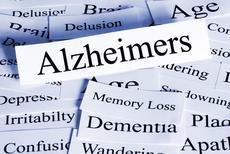
Written report finds Alzheimer's could exist diagnosed much earlier
Genetic markers appear to predict who volition get the affliction later in life
Alzheimer's illness strikes older adults, but increasingly, doctors think at that place are means to identify young people who volition be at risk.
The latest inquiry is published in the online issue of the periodical Neurology, and information technology reveals a genetic gamble score that may identify those at run a risk of the cognitive illness long before any symptoms appear.
Elizabeth C. Mormino, PhD, with Massachusetts General Hospital in Charlestown, Mass., says there is an early on stage of the illness that can last a decade or more than without the appearance of symptoms.
"Given that electric current clinical trials are testing whether therapies tin slow memory and thinking decline among people at risk for the disease, it is disquisitional to empathise the influence of take a chance factors before symptoms are present," Mormino said.
The study
The study looked at people with dementia and those without information technology, assigning each a numeric score based on the presence of high risk genes. The participants were examined for common Alzheimer's markers, including a decline in retention and thinking skills, clinical progression of the disease, and the volume of the hippocampus, which is the memory center of the brain.
The research squad adjacent looked at whatsoever links betwixt the hazard score and hippocampus size in 1,322 healthy, younger participants between the ages of 18 and 35.
Results
Fifty-fifty among older people who had no dementia – but who had a college genetic risk – there was a stronger likelihood of worse memory and smaller hippocampus at the start of the written report.
Over the three years of the written report, a college genetic run a risk score was also associated with greater longitudinal memory and executive role decline and clinical progression of the disease.
The risk score was besides linked to overall illness progression, with xv of 194 participants who were cognitively normal at the start of the written report developing mild cognitive damage or Alzheimer'southward disease. Of the 332 subjects with mild cognitive impairment at the start of the study, 143 adult Alzheimer'southward disease after three years.
Mormino concedes it was a pocket-size study, but she says further research could help doctors better identify people at high risk of dementia at a much earlier age and brainstorm preventive treatments sooner.
Alzheimer's disease strikes older adults, but increasingly, doctors recollect there are ways to identify young people who will exist at risk.The latest resear...
Read less Read more than

Two proteins may be responsible for dementia in Alzheimer's patients
The study is the commencement two definitively link both proteins to cognitive decline
Researchers are still working hard when it comes to understanding how Alzheimer's disease works, and that commitment may exist beginning to pay off. A written report conducted at the Douglas Mental Health University Constitute may have uncovered the driving forcefulness behind the disease's signature symptom – the development of dementia.
For a while now, scientists take suspected that dementia developed in Alzheimer's patients because of the presence of two proteins, chosen amyloid and tau, respectively. However, they were uncertain nearly which poly peptide, if either, was the driving strength behind the dementia symptom. It turns out that it may be both.
A study has found that both amyloid and tau work in tandem to create toxic effects that lead to encephalon harm. It is the first slice of definitive prove that connects the two proteins to cognitive damage sustained by otherwise cognitively intact individuals.
Challenging previous theories
While the build-upward of amyloid and tau proteins tin can be dangerous on their own, the researchers plant that their ability to cause harm was increased when they were together.
"Nosotros specifically found that both proteins mutually enhance their individual toxic effects and crusade a brain dysfunction considered to be a signature of [Alzheimer's disease]. This finding challenges previous polarized theories that a single poly peptide abnormality was the major driving force of illness progression," said Dr. Pedro Rosa-Neto, lead scientist of the study.
The researchers came to their conclusions later analyzing 120 cognitively intact individuals over a two-year period. Participants had their amyloid and tau levels monitored for the duration of the report. Based on the changing levels that the researchers observed, they were able to meet how the proteins reacted with each other and then predicted which participants were the most likely to suffer encephalon impairment equally a result of Alzheimer'south disease.
New therapies
The researchers believe that their discovery may help in the evolution of new, more constructive therapeutic approaches that target both proteins in the brain.
"Until at present, therapeutic clinical trials accept targeted a single pathological procedure. Our result paves the way for new therapeutic strategies for prevention or stabilization of [Alzheimer'due south disease]. For example, combination therapies should be used simultaneously against both amyloid and tau poly peptide accumulation," said Dr. Tharick A. Pascoal, lead author of the study.
The full report has been published in the periodical Molecular Psychiatry.
Researchers are nevertheless working hard when it comes to agreement how Alzheimer's disease works, and that commitment may be get-go to pay off. A study c...
Read less Read more
What To Do When An Alzheimer Patient Gets Violent,
Source: https://www.consumeraffairs.com/alzheimers-risks-and-treatment
Posted by: randolphhavall.blogspot.com


0 Response to "What To Do When An Alzheimer Patient Gets Violent"
Post a Comment